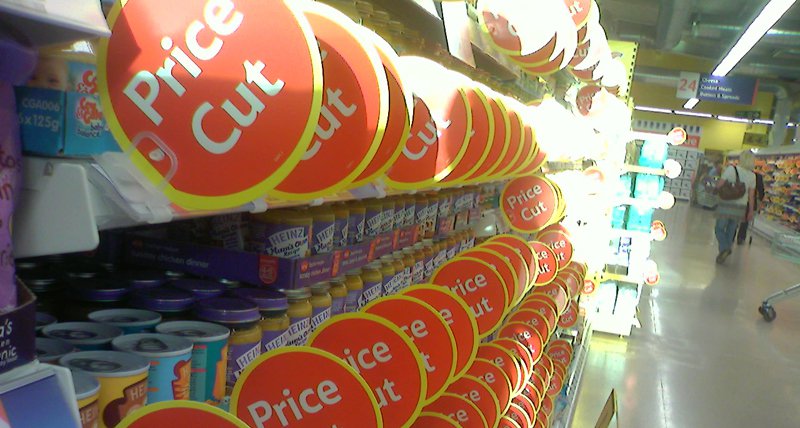As many as 65% of consumers are open to price changes throughout the day, especially if a product is reaching a sell-by date, according to a new report by Displaydata and Planet Retail RNG. And about half, 52%, are open to dynamic pricing if it is to price match, even though 25% of retailers are not convinced that customers will accept these price changes.
What retailers do agree on is that price agility can improve store efficiencies and margins (84%) and increase consumer loyalty (82%). Therefore, 78% of retailers want the ability to make price changes and offer better deals. But for those that use paper labels, 65% of retailers are not able to make fast changes that they want to.
“Despite being a logistical hurdle to make real time-price adjustments using paper based process, the process of manually changing paper price labels hasn’t changed in decades,” Paul Milner, marketing director for Displaydata, told FierceRetail. “Dynamic pricing is real-time pricing, and to keep up with the real-time nature of e-commerce, retailers must invest in the proper technology.”
In addition, the study showed that the right price can make or break an in-store sale for 80% of respondents. Only 43% of shoppers trust that the price on a display shelf will be the same at checkout. And another 53% believe that in-store prices are occasionally inaccurate.
The need for dynamic pricing in stores seems to be growing, as physical retail needs to keep up with digital retail. Globally, one-third of shoppers compare prices when out shopping and 1 in every 9 consumers will find a cheaper competitor online.
Retailers are acknowledging the role that technology plays in dynamic pricing: 42% see improving digital customer engagement in-store and 37% view increasing the alignment of physical and online as priorities for 2018.
Milner explained that there are are three big reasons why more retailers haven’t invested in the necessary store technology to price dynamically.
First, most retailers do not realize how expensive paper price labels are. In 2017, manual pricing and promotion changes at the shelf cost retailers globally $104 billion in sales.
The second hurdle for retailers is the initial expense.
“Bringing in new technology, especially one as robust as electronic shelf labels, will bear an initial cost,” he said. “But if retailers can shift their perspective from the immediate investment to the potential revenue (and consumer trust) waiting for them on the other side, they will be more agile in responding to retail competition, and more successful as a result.”
Lastly, some retailers assume that dynamic pricing is not something customers would want or respond to, although the data shows that this is not true.
“Dynamic pricing will come to be expected from every retailer in the future – technology intersecting retail is not slowing down,” Milner said. “The right price, accurately displayed, is still the single most influential buying factor for shoppers, and as technology evolves, customer expectations will follow. Shoppers want digital technologies to enhance their experience in-store, so why wouldn’t you give it to them?”

